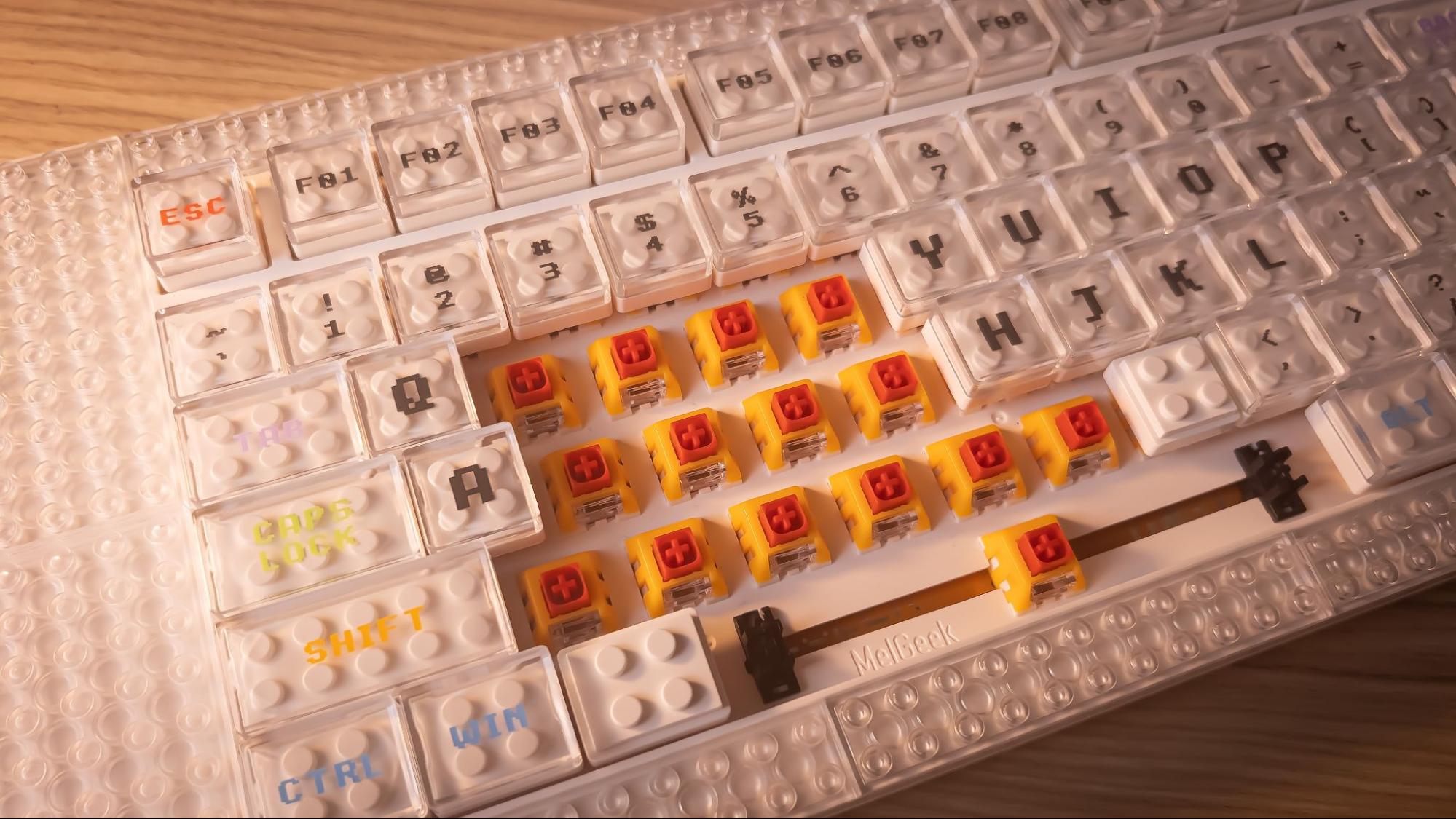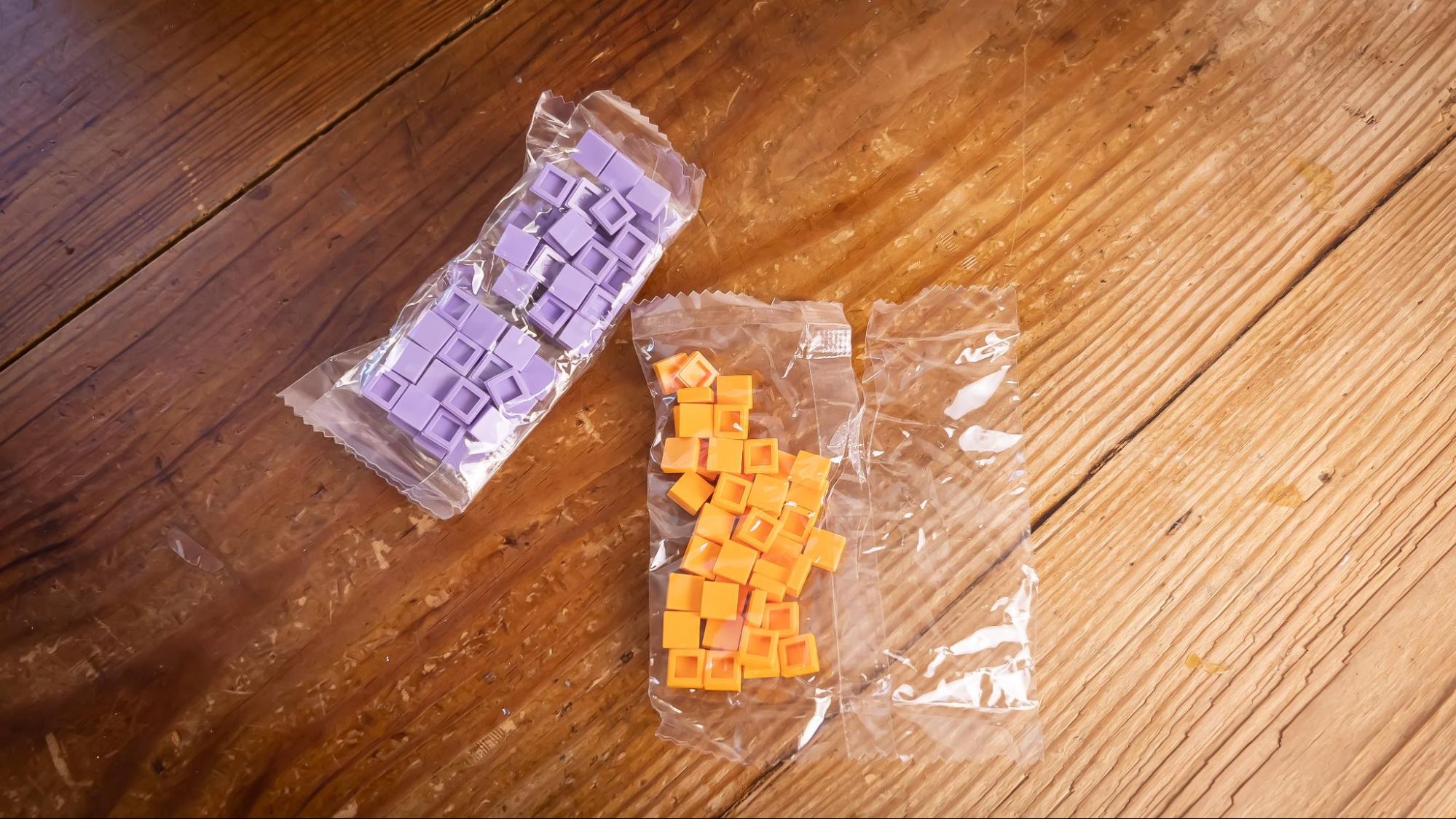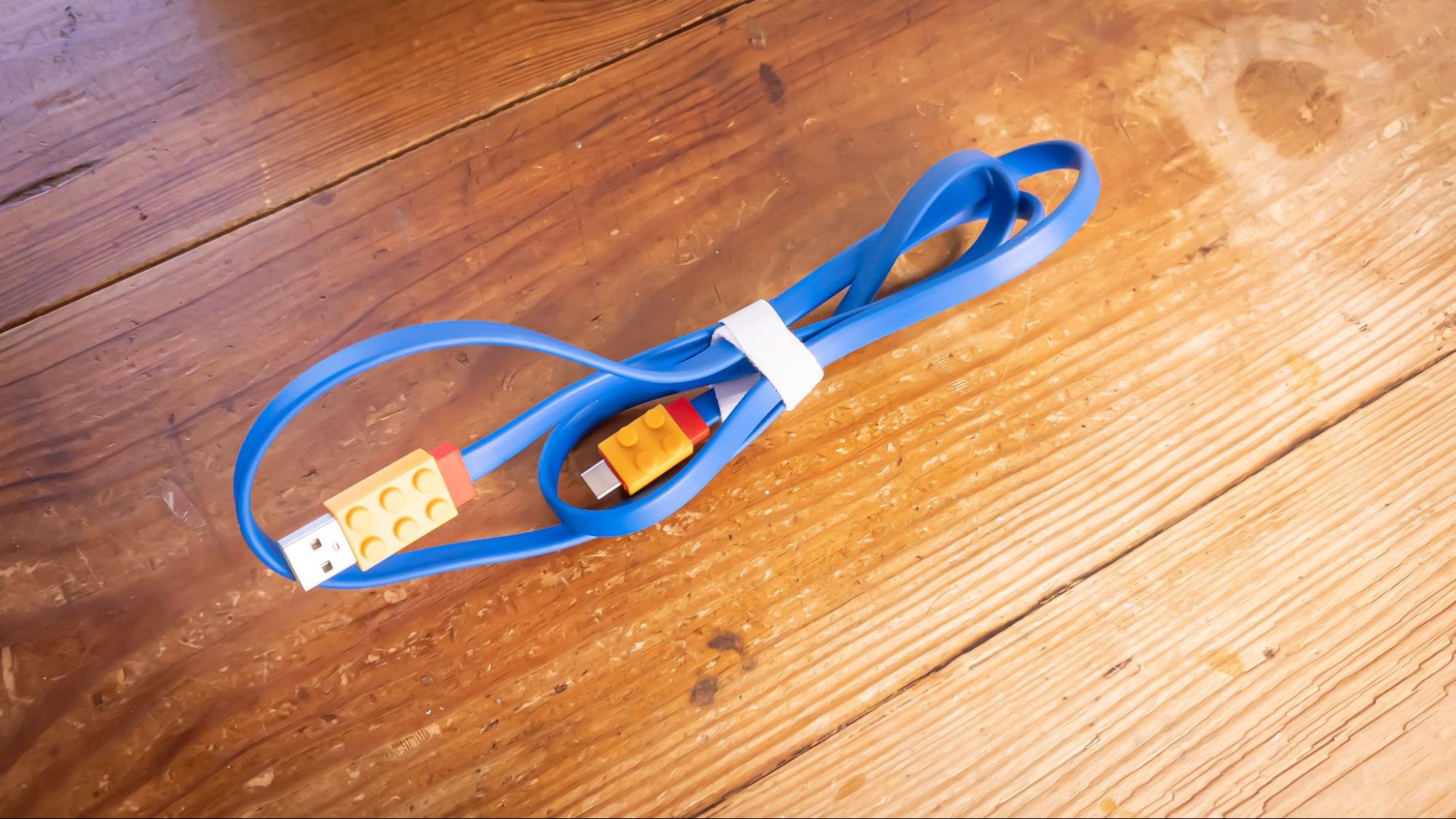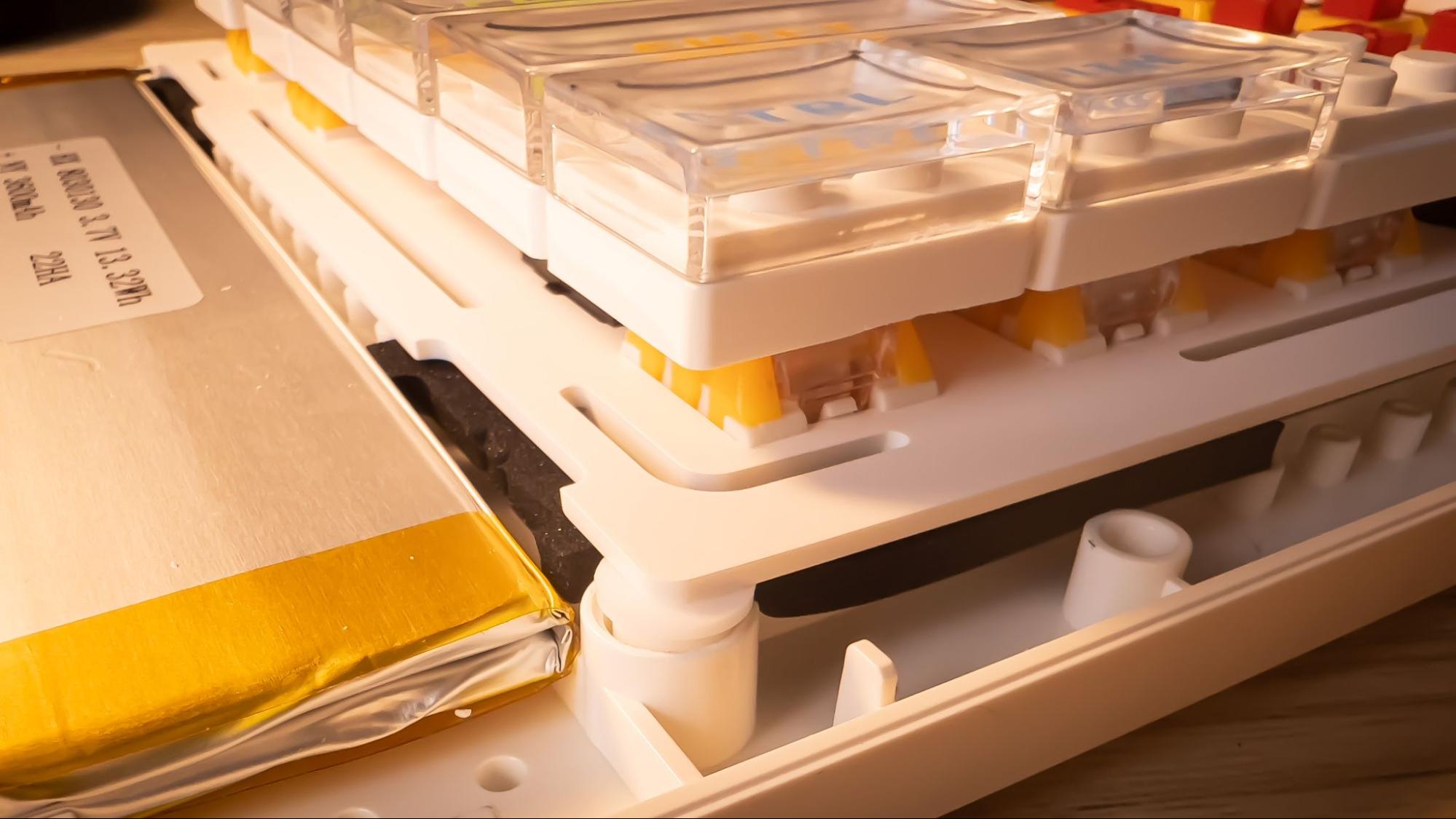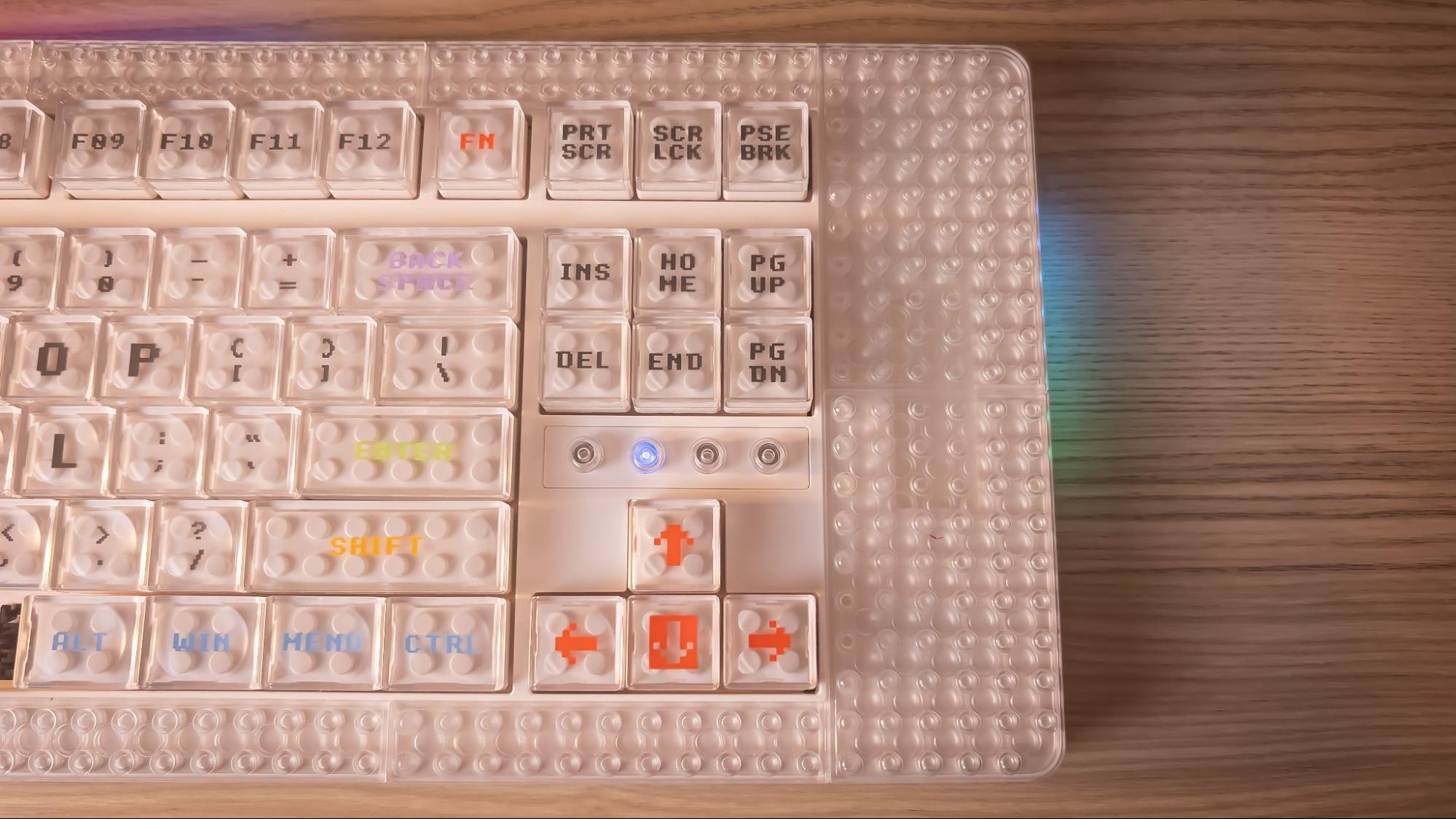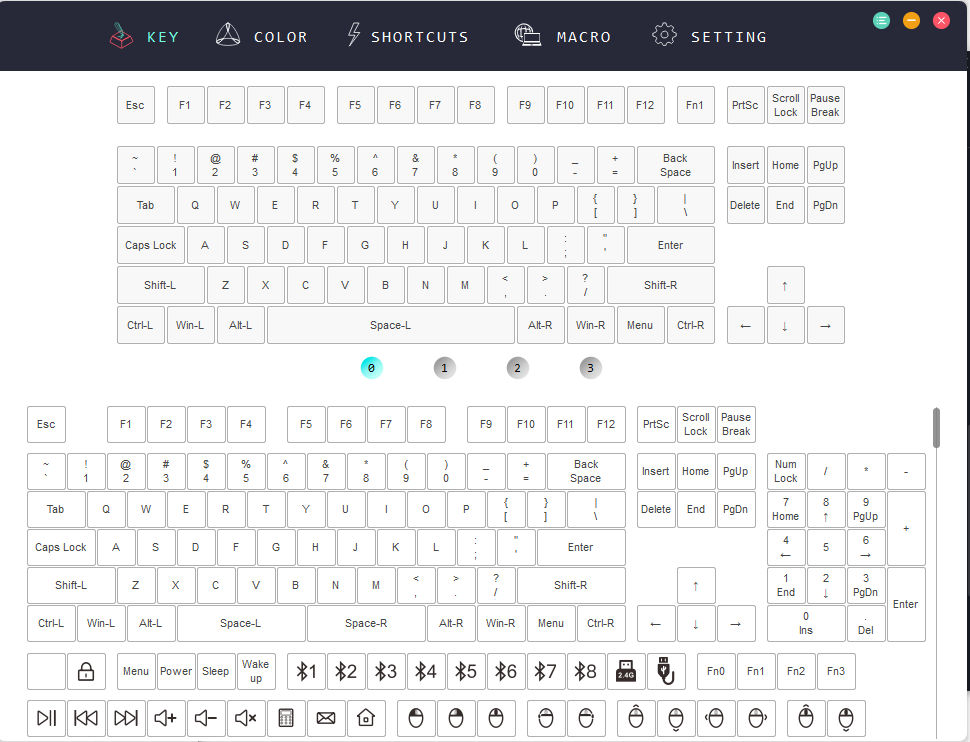Tom's Hardware Verdict
The Melgeek Pixel is a cute novelty item for Lego enthusiasts, but the uncomfortable typing experience and high price point ruin the fun.
Pros
- +
Lots of Lego-inspired details
- +
Smooth switches
- +
Bluetooth and 2.4 Ghz wireless connectivity
Cons
- -
Flat, narrowly-spaced keycaps are uncomfortable to type on
- -
Software doesn’t work
- -
Doesn’t include the bricks you need to recreate designs
Why you can trust Tom's Hardware
The mechanical keyboard hobby is all about customization and experimentation — and for that reason, companies are constantly testing new mounting designs that look and feel great. The same can be said about Lego, which are little plastic building blocks that can make an idea come to life.
The Melgeek Pixel combines both of these worlds: it's a gasket-mount tenkeyless (TKL) mechanical keyboard built almost entirely of Lego-style pieces (with the exception of the PCB, switches, and all that — of course). The Pixel is a wireless keyboard featuring both low-latency 2.4GHz and Bluetooth 5.2 connectivity, and comes in three base colors — "Palette" (white base with red, blue, and yellow keycaps), "Christian" (pale pink base with pink and gray keycaps), or "Canvas" (white base with white keycaps and colorful legends).
The Pixel is available now on Kickstarter for the Super Early Bird Price of $199, an Early Bird price of $219 and a Kickstarter Special price of $239. The official MSRP is listed at $269. Accessories, including extra cables, keycaps, switches, and packs of Lego bricks are also available for between $10 - $30.
This might sound like great news for both mechanical keyboard enthusiasts and Lego enthusiasts. Unfortunately, the Pixel is terrible for typing — you’re better off spending that $200+ on a keyboard or Legos, not a gimmicky mashup.
Melgeek Pixel Specifications
| Switches | Kailh Box Red (With yellow upper housing) |
| Lighting | None |
| Onboard Storage | None |
| Media Keys | With FN |
| Connectivity | USB Type-C to Type-A |
| Cable | 4-feet, rubber |
| Additional Ports | 0 |
| Keycaps | Lego-style |
| Software | KB Tools |
| Dimensions (LxWxH) | 444.5 X 165.1 x 25.4mm |
| Weight | 2.64 pounds |
Design of the Melgeek Pixel
The Melgeek Pixel is a tenkeyless (TKL) gasket-mount mechanical keyboard unlike any keyboard on the market, as its exterior is composed of Lego-style pieces. It comes in three colors — white with red, yellow, and blue keycaps; pink with pink and gray keycaps; and white with white keycaps (with colorful legends). Our review model was the latter, called "Canvas."
Because the Pixel is inspired by the popular toy company, it offers a large canvas for you to build whatever Lego design you want. Unfortunately, this also makes it one of the most uncomfortable keyboards I’ve typed on — and no, it’s not because the keycaps are made of Lego-style pieces (they’re not bricks, anyway). I’ll discuss my gripes with the Pixel’s typing experience a little later, though; the board has many other cool features to discuss.
Initially, I thought this would be a regular gasket-mount keyboard with a Lego case, but I was wrong. Excluding the main mechanical components, such as the hot-swap PCB (which supports 5-pin switches and has a strange gasket-mount design), everything in this keyboard really is inspired by Lego.
Get Tom's Hardware's best news and in-depth reviews, straight to your inbox.
The switch plate is made of the same type of plastic Legos are made of — and so is the power switch, as well as the keycaps and the case. Even the 2.4GHz wireless dongle and the keyboard’s USB-C to USB-A cable sport Lego-inspired designs.
This plank wouldn’t be a Lego-inspired keyboard without some pieces to build with, right? Melgeek included around six colors (65 flat pieces per color) with the board, but the colors didn’t truly match the marketing images. For example, many of the photos show yellow bricks, and yellow is not provided — Melgeek provided blue, white, red, orange, green and purple. On top of this, no minifigures were included, which was a bummer.
When I took the keycaps off to inspect the switches, I was greeted with Kailh Box switches featuring a yellow upper housing and a red stem to match the Lego logo. Kudos to Melgeek for having custom-colored Kailh Box switches made for this board. When you purchase the Pixel, you can choose either these custom Kailh Pixel L switches or custom Kailh Pixel T switches. You can also buy Kailh Box White v2 switches, Gateron Pro Yellow switches or Gateron Pro Silver switches as add-ons.
Typing and Gaming Experience on the Melgeek Pixel
The Pixel has an unusual gasket-mount design: it sits on top of rubber domes that look like skinny membrane switches. It’s tough to explain, but a gasket-mount keyboard is meant to provide flexibility with each keystroke and a softer typing feel than a standard tray-mount. While the bottom-out was certainly softer, typing on this board was, frankly, awful.
This board is designed to look like a Lego set, and the keycaps feature clear plastic tops over Lego-style bricks to preserve that visual. (The plastic tops are removable, allowing you to customize the keyboard’s design even further.) The keycaps are flat and wide, and while the tops are slightly concave they’re just too flat overall to be comfortable. Additionally, typing on this super flat design resulted in tons of typos, as there was almost zero space between keycaps.
The uncomfortable, flat keycaps were the main contributor to the Pixel’s brutal typing experience, but the flat, wide case didn’t help. Most keyboards on the market are at least somewhat angled, which is what I’m used to — the Pixel, however, is a flat rectangle with no wrist support. I felt like I was hovering my wrists over the keyboard like a piano player (and I’m a terrible piano player).
So the typing experience on the Pixel is better off forgotten. That said, Melgeek tuned this board so that it sounds much better than most mainstream mechanical keyboards. The sound of the board is deeper than average, thanks in part to the Lego-plastic construction.
I’ve reviewed quite a few keyboards now, and the only other keyboard I really struggled to type on was the ErgoDox 76 — which makes sense, because it’s a split ortho linear board. The Pixel may be inspired by Lego, but it’s still a keyboard and should be somewhat comfortable to type on, especially at its price.
Gaming on the Pixel was also difficult. When I play first-person shooters, I only really use W, A, S and D, and this has never been an issue with any keyboard I’ve gamed with, until now. I tried playing Call of Duty: Modern Warfare (to prepare for Modern Warfare 2), and even after 45 minutes of playing I couldn’t get used to the Pixel’s flat, close keycaps. Instead of moving forward with the W key, I kept accidentally hitting Q and causing accidental stun grenade throws. I don’t normally get frustrated while gaming, but this board was pushing me.
Software for the Melgeek Pixel
The Melgeek Pixel sports the most external customization out of any keyboard I’ve used, thanks to its Lego frame. However, the internal customization...doesn’t work. Melgeek’s KBTools software didn’t recognize the Pixel, and clicking on tabs caused the software to crash. This is a TKL board, so all of the keys you need — minus the number pad — are present, but it would still be nice to have some level of configuration.
When it comes to external customization, Melgeek has a website to help you bring the Pixel to life.
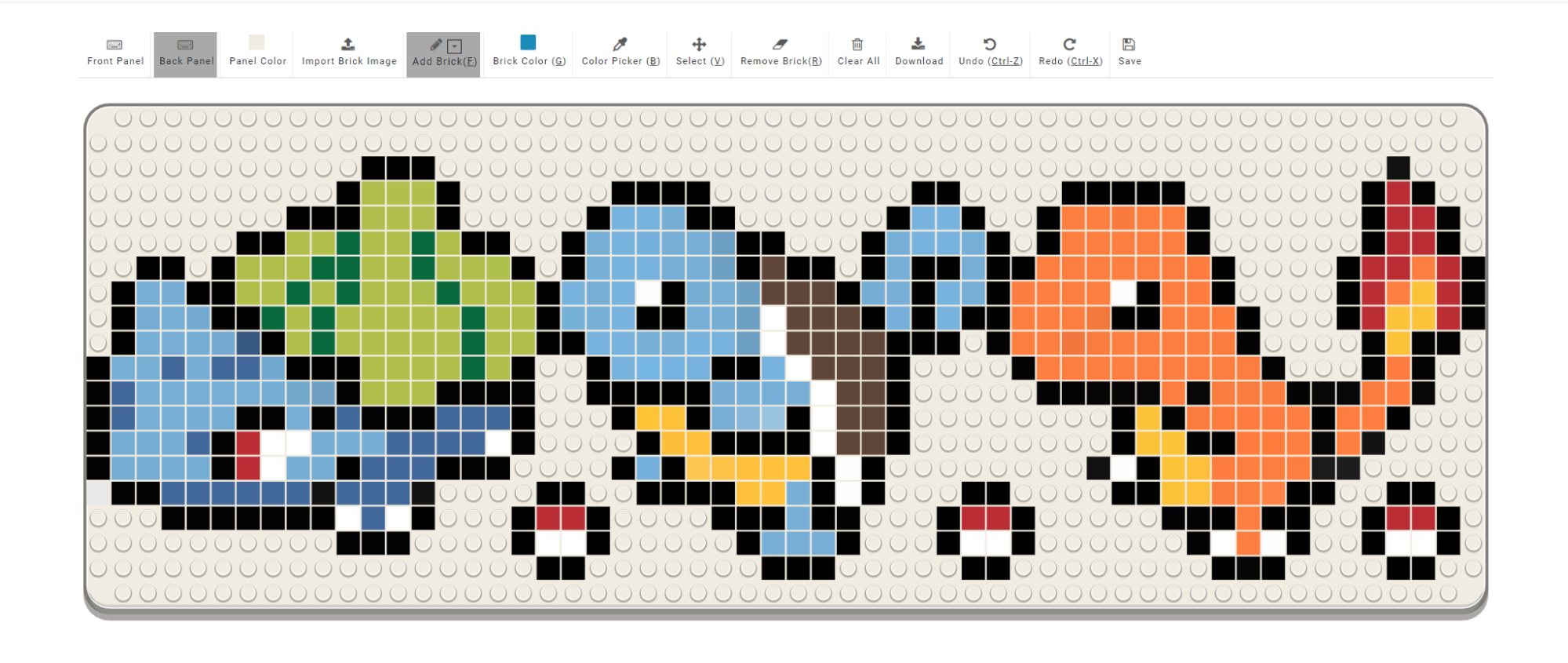
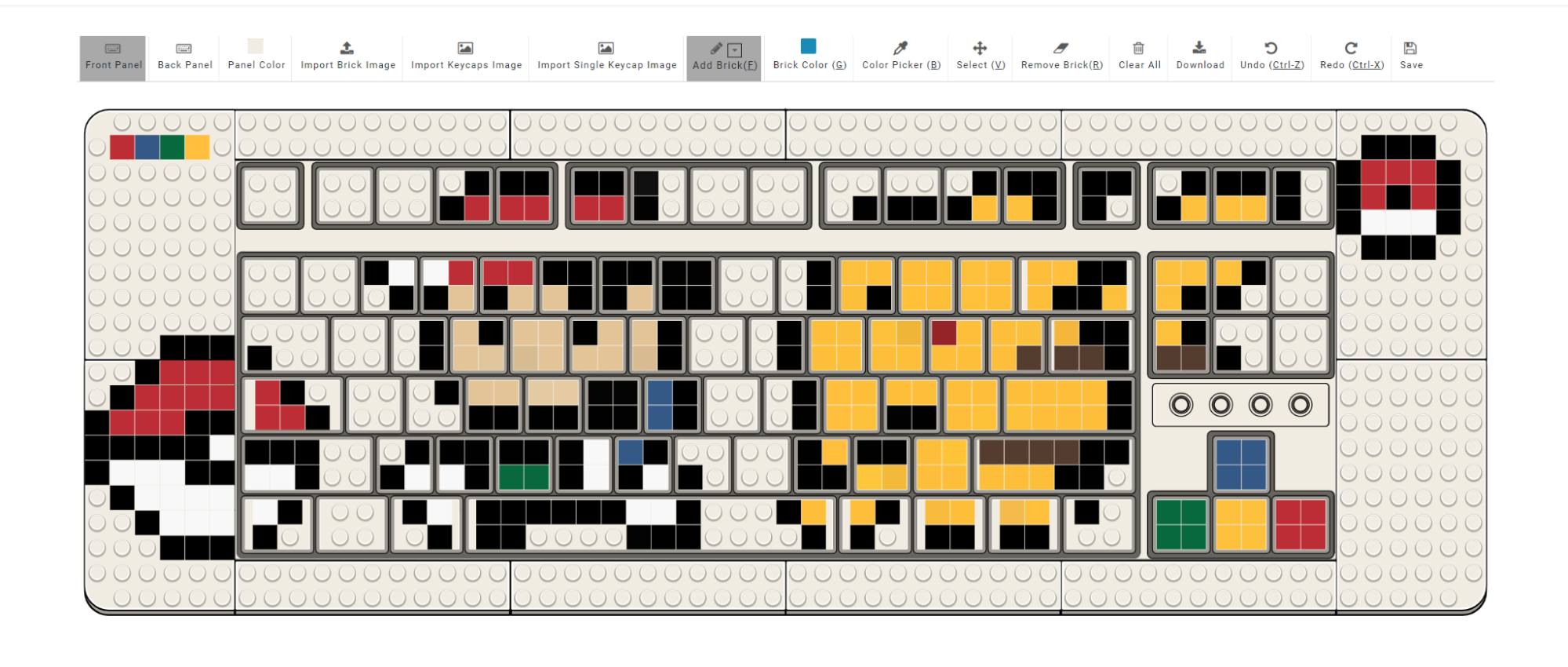
Pixel design inspiration created by artist Bobasaur
I not only lacked the artistic skills to recreate this Pokemon design made by Bobasaur — I also lacked the yellow bricks. I’m not very artistic, so I passed the board over to my friend, John, who took full advantage of the Pixel’s canvas.
Bottom Line
The Melgeek Pixel isn’t good enough as a keyboard, nor is it good enough as a Lego-style set, especially for the price. The Super Early Bird special on Kickstarter is $199 — I know Legos aren’t cheap, but that’s absurd. Melgeek should’ve taken more inspiration from Lego and offered this board in a kit.
It’s hard to recommend the Melgeek Pixel, because it’s one-part novelty and one-part keyboard. I’m sure Lego enthusiasts will love this board as a collector’s piece, even though it doesn’t come with the bricks you need to recreate most of the designs we’ve seen floating around the internet. (I assume a real Lego enthusiast will have their own bricks and minifigures, so maybe that’s not an issue.) But if you’re looking for a keyboard and not a Lego set, the Pixel just isn’t worth it.
MORE: Best Gaming Keyboards
MORE: How to Pick Keycaps for Your Mechanical Keyboard
MORE: All Motherboard Content
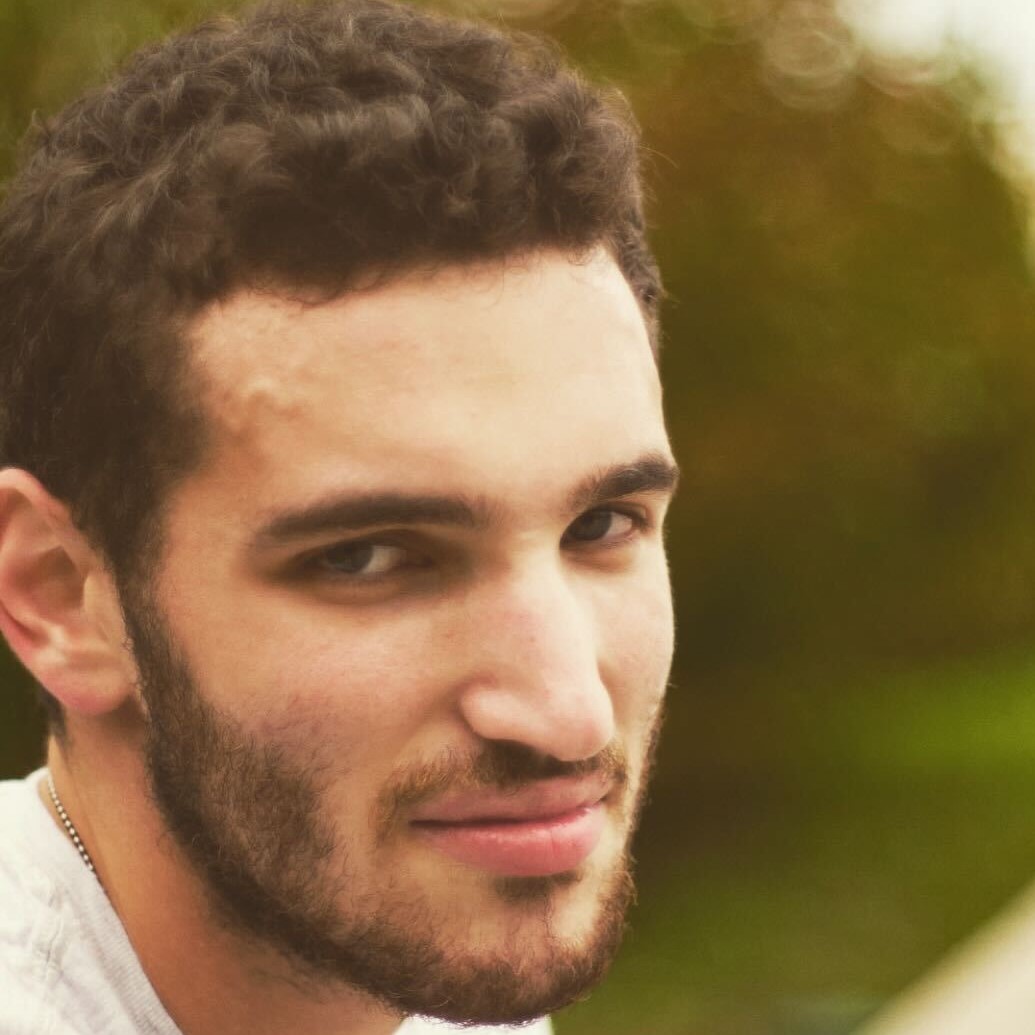
Myles Goldman is a freelance writer for Tom's Hardware US. He reviews keyboards and cases.
